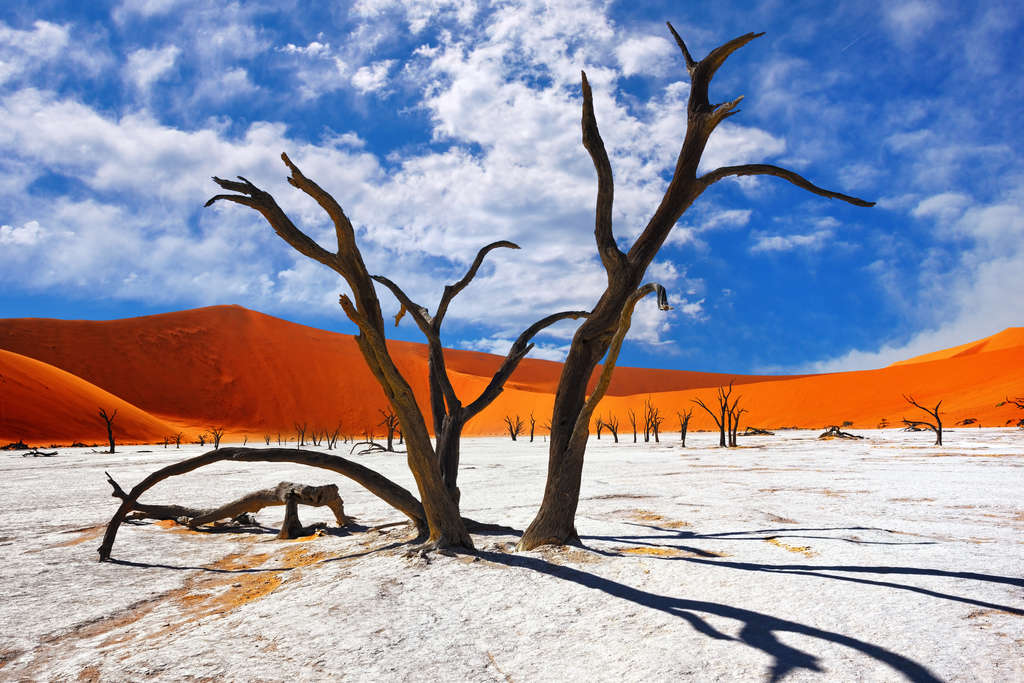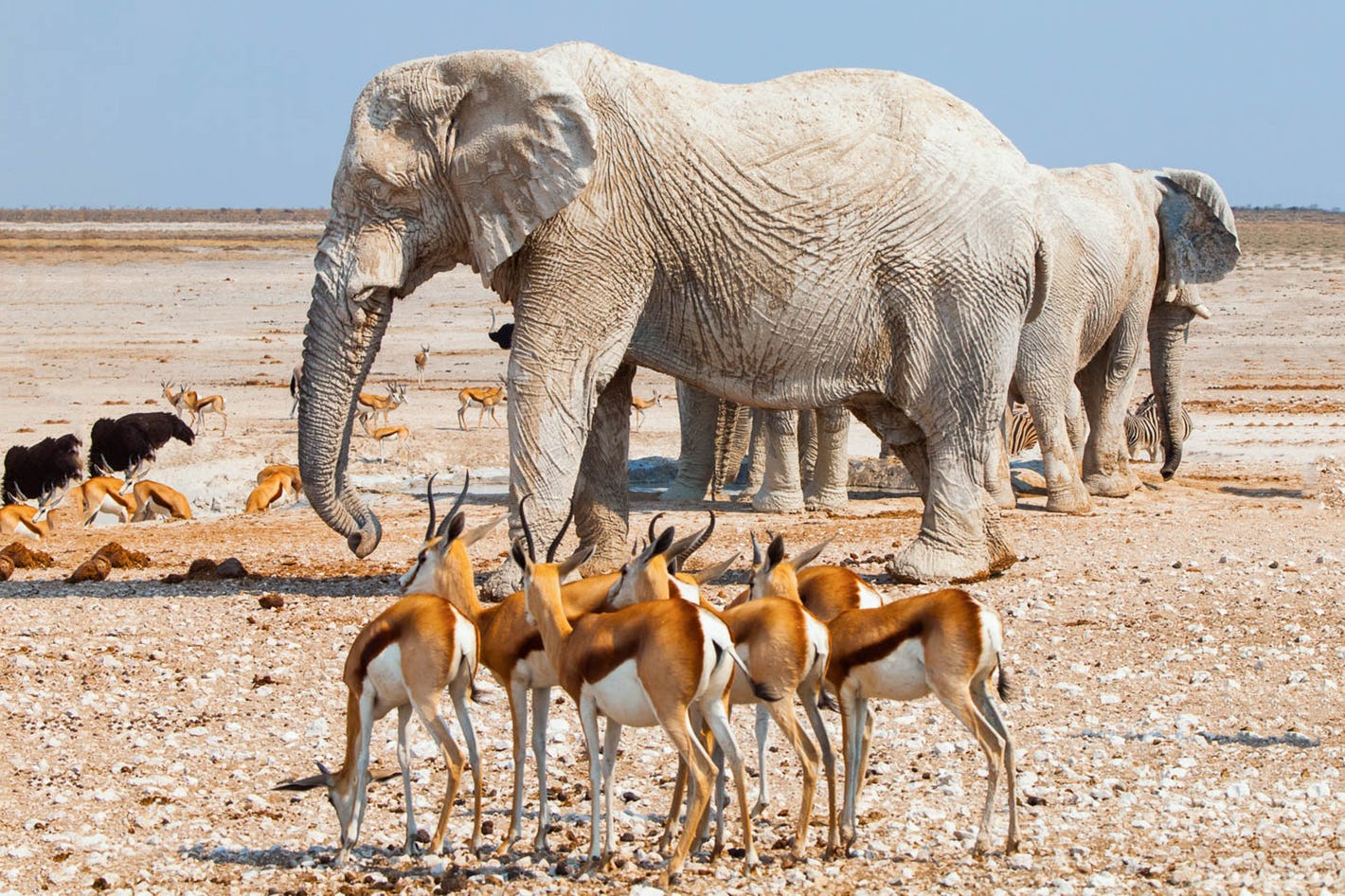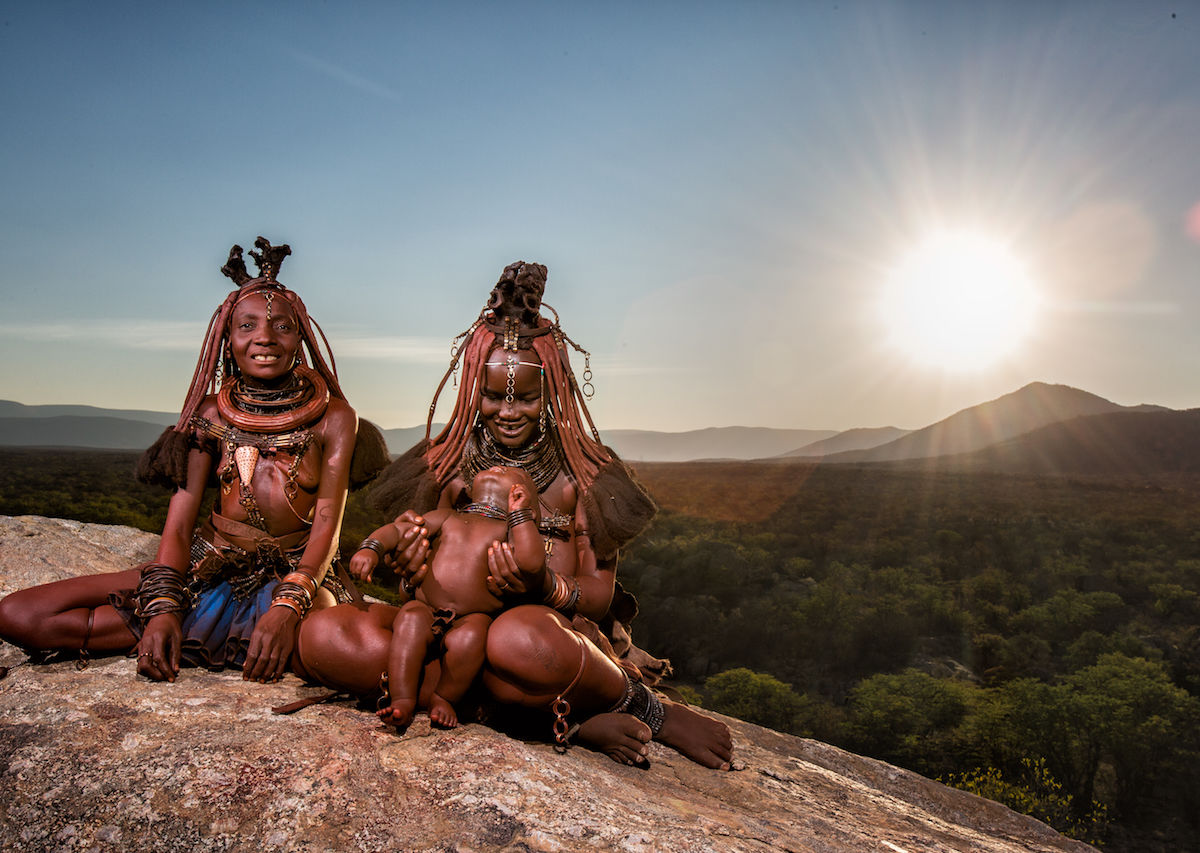Namibia Photo Safaris
Namibia Photo Safaris : Our experience with African continent allows us to always choose the right time and the right locations along with Friendly professional wildlife photography guides and rangers. The wast sandy dunes, and huge blue skies of this part of Africa have always been on top of the list of landscape and wildlife photographers from all over the world.
Namibian national parks are truly engaging and inspiring places to visit. Apart from the beautiful landscape, we will focus on wildlife photography in Etosha National Park and and look for
- Desert-adapted Elephants,
- Desert lions,
- black rhino,
- Cheetahs,
- Giraffes,
- Leopards,
- Zebra,
- Wildebeest,
- Oryx,
- Reptiles like amaqualand Chameleon and Palmato Gecko
- Flamingo or teeming with Fur Seals
Namibian Wildlife Photo Safaris
• 12 days in Namibia’s best National Parks photographing Lions, Elephants, Cheetahs and native wildlife.
• Max 6 participants in each tour, ensuring personal attention to each one of you.
• Ample game drives in total to increase photo opportunities.
• Photography tuition covering all aspects of wildlife photography.
• Extra attention to accommodate special needs of our photographic equipment.
• Luxury accommodations, including all meals and private road transfers between all stops throughout the trip.
• Focus on up-close and real wildlife experiences from the surroundings of premier accommodations.

Is This Trip For You?
This tour will suit beginners as well as advanced to professional photographer’s needs. Depending on your expectations, we will cover basics of photography, composition, techniques, post processing and printing. We encourage you to ask as many question you can. We will spend maximum time inside the national park.
Wildlife Photo Safaris Namibia
Here are some key points to help you decide:
1. We welcome photographers as well as all nature lovers. This tour will be helpful to learn photography in the field with an experienced photo guide as well as to learn from the fellow photographers. You will learn not only photography but also the animal behaviour.
2. This is NOT a tour where lots of tourists take a large vehicle and move from animal to animal in quick succession. We focus on photography and we don’t mind waiting for the photography eg. waiting for perfect lighting conditions or great animal behaviour. We travel in small group (5-6 people) to provide up-close wildlife photography experience.
3. We focus mainly on photographing in the field. We will spend most our time and effort on tour / photographic activities and making images.
4. Non-photographer or videographer partners / travel companions will love these tours. The wildlife and cultural experiences on this trip will appeal to anyone with a love for animals and adventure. We have specialist guides leading all activities.
Suggested Itinerary for Namibia Photo Tour
(Please note: The same Itinerary is also available as a fly-in safari, which will save lot of your time and give more photographic opportunities)
Day 1: We will Arrive at the Namibian capital of Windhoek. (Flight Details will be shared with participants)
We will arrive in Windhoek during the morning and will be driven to Etosha National Park We will stay for the first 3 nights which is the Mokuti Lodge based just a few minutes outside of the eastern end of the park. We will rest for the night to relax and make ourselves ready for the tour ahead. Rangers and guides will give us detailed information at this stage.
Days 2-3: A short break for lunch when the light is at its harshest will be taken back at Mokuti each day. Etosha is excellent for all the main herbivores (elephant, zebra, wildebeest, oryx etc) as well as holding good numbers of lion, leopard and cheetah so there is plenty of excellent potential. We are visiting during the heart of the dry season when all of these will look to come and drink each day hence the waterhole staking strategy.
Day 4: Our morning schedule will be the same, but during the course of the day we will be making our way to the west of the park (visiting new waterholes en-route, one of which is excellent for elephants bathing in white mud!) and basing ourselves for our final night here inside the park itself at the Okaukuejo rest camp. The floodlit pool here is the main attraction as it provides the opportunity to photograph black rhino most nights when they visit, and with suitable white balance and ISO’s good images of these shy animals can be achieved.
Day 5: On our final morning in Etosha the camp waterhole is an excellent place for sunrise as the light works perfectly for reflections of all the visiting animals, so we will spend our morning session here before packing up and leaving the Etosha area to head west to Damaraland and our base for the next 3 nights near the settlement of Sesfontein.
Days 6 – 7: The river valleys of this area, in particular the Hoanib, will be dry at this time of year save for a few waterholes. These valleys though are home to the desert-adapted elephant and giraffe, as well as a small population of lion the former unique to this area of the continent. We will leave early each morning (for best light) in our private vehicles and driver guides to search the river valleys for these specially adapted mammals and some very different settings for these much-photographed species. The river valleys here are truly striking in terms of their landscape and with barely another vehicle around this is an amazing experience as well as setting to photograph. Both days will be full days in the field.
Day 8: After breakfast we will head off to the aptly named Skeleton Coast region. En-route we will be visiting the world’s largest breeding fur seal colony (the sight, sounds and smells are extraordinary) for a full photography session before the final leg of our journey to the coastal town of Swakopmund and our comfortable guest house accommodation.
Day 9: Our morning will be taken up on a private tour into the sand dunes of the surrounding Namib Desert with a local guide and expert in the so-called Little 5, which includes namaqua chameleon, Peringuey’s adder and palmato gecko. We will have the opportunity to photograph all of this close-up and the macro (as well as wide-angle) opportunities are superb. In the afternoon and through to sunset we will visit the lagoons of nearby Walvis Bay where huge numbers of both greater and lesser flamingos gather providing flight, portrait and group photographic opportunities aplenty.
Day 10: After an early morning return to Walvis Bay we will head south within the Namib region to the internationally renowned Sossusvlei area and will enjoy a first afternoon exploring the grasslands and iconic red sand dunes of the area before retiring to our hotel near the Sossusvlei National Park and where we will be based for 2 nights.
Day 11: We will be up for dawn to allow us to visit the iconic Dead Vlei and Sossusvlei. You will know the images from here as they are quite unique locations, and they are both amazing locations to work in photographically: a real landscape photographers dream. From a wildlife perspective oryx are reasonably common in the area and we have photographed avocet of all species in a dried-up part of Sossusvlei itself one year too so there’s still plenty of wildlife to add to the landscape opportunities. With a break in the middle of the day we will explore the area for the full day under our own steam.
Day 12: Depending on final flight times/schedules we hope to have a final early morning session in the park before heading back to Windhoek and our evening flights back to your home country: a perfect Namibian location on which to finish the trip for sure.
Day 13: Arrive back to your home country.
What’s included in the tour cost?
• Accommodation on a Twin shared basis (single rooms may be available – please inquire).
• All meals (Breakfasts, Lunches Dinners , snacks, Tea/ Coffee)
• Private game drive activities for our group at Namibia’s best National Park.
• Private meet and assist services at the airport and chauffeured transfer to the hotel.
• Private vehicles and drivers for all road transfers throughout the trip.
• Soft drinks and bottled water during sightseeing tours and long drives.
• Entrance and still camera fees at all parks and sight-seeing destinations.
• The current National park entry permits and tourism levies and all relevant government taxes.
What’s Not Included?
• International airfare and/or other transportation between your home and Windhoek, Namibia.
• Gratuities for hotel staff.
• Gratuities for game drive driver/guides in the National Park.
• Champagne, cognacs, premium-brand spirits, fine wines and cigars.
• Visas, travel insurance, personal purchases (including curios, spirit liquors, telephone calls etc.)
Tour Leader: Perhaps the most important aspect of a photographic safari is your leader. All our photo safaris are personally hosted and lead by experienced wildlife photographers.
Our professional wildlife photographers have spent years in the wilderness, following specific animals day after day for several months and witnessing extraordinary and rare to see behaviour. They have extensive first-hand knowledge on the behaviour of many animals including Leopards, Lions, Cheetahs and Elephants.
Apart from organising your photo-safaris, they will accompany you to Masai Mara, share their knowledge of wildlife as well as help you with expert tips on wildlife photography and post processing. They will be there to coordinate with the driver, instructing on positioning, approach, timings, lighting conditions etc.
Photo Tour Cost:
Please click the book now button below to see the cost of this all-inclusive tour. . This fee includes all in-country transportation as well as hotel accommodation (double occupancy) and all meals. You can reserve you place by paying 25% deposit and rest 75% is due 90 days before the tour date.
Safari Vehicles:
We have arranged to have use of a special 4×4 for the duration of our photo safaris.
Lens Recommendations :
The resorts are quite happy to fill the refillable beanbags on arrival. Lenses of up to 500mm (on full frame) should suffice for 90% of your needs, the animals can get quite close, but it depends on your kind of photography obviously. A 600mm (or more) would be quite necessary for birds. A medium range 70-200mm lens would be very hand too.
We recommend dust covers for your camera gear due to dusty conditions in the field. We also encourage use of polariser filters.
What Do I Do Next?
Our groups are small, so space is limited. If this exciting trip has your name on it; if you’re excited by the thought of becoming a member of this trip, then now is the time to register. Remember, there will be limited space available for this workshop.


